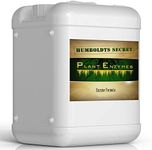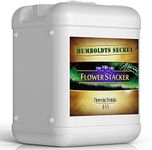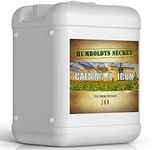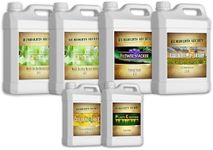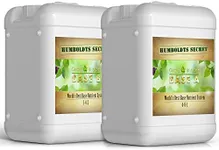Buying Guide for the Best High Nitrogen Lawn Fertilizer
Choosing the right high-nitrogen lawn fertilizer can make a significant difference in the health and appearance of your lawn. High-nitrogen fertilizers are essential for promoting lush, green growth and overall lawn vitality. When selecting a fertilizer, it's important to understand the key specifications and how they relate to your lawn's needs. This guide will help you navigate through the important factors to consider, ensuring you pick the best product for your lawn.Nitrogen ContentNitrogen is a crucial nutrient for grass growth, as it helps promote lush, green foliage. High-nitrogen fertilizers typically have a higher percentage of nitrogen compared to other nutrients. The nitrogen content is usually represented by the first number in the N-P-K ratio (e.g., 30-0-0). For a high-nitrogen fertilizer, look for products with a nitrogen percentage of 20% or higher. If your lawn is looking yellow or thin, a higher nitrogen content can help rejuvenate it. However, be cautious not to over-fertilize, as too much nitrogen can lead to excessive growth and potential damage.
N-P-K RatioThe N-P-K ratio represents the proportions of nitrogen (N), phosphorus (P), and potassium (K) in the fertilizer. For high-nitrogen fertilizers, the first number (N) will be significantly higher than the other two. For example, a ratio of 30-0-0 indicates a high nitrogen content with no phosphorus or potassium. This type of fertilizer is ideal for established lawns that primarily need nitrogen for growth. If your soil test indicates a deficiency in phosphorus or potassium, you may need a more balanced fertilizer or additional supplements.
Release TypeFertilizers come in two main types: quick-release and slow-release. Quick-release fertilizers provide an immediate boost of nitrogen, which can be beneficial for a quick green-up. However, they need to be applied more frequently and can potentially burn the grass if over-applied. Slow-release fertilizers, on the other hand, release nitrogen gradually over time, providing a steady supply of nutrients and reducing the risk of burning. They are ideal for maintaining consistent growth and require fewer applications. Choose the release type based on your lawn care routine and the immediate needs of your grass.
Application MethodHigh-nitrogen fertilizers can be applied in various forms, including granular, liquid, and spray. Granular fertilizers are easy to apply using a spreader and are suitable for large lawns. Liquid fertilizers can be mixed with water and applied using a hose-end sprayer, providing even coverage and quick absorption. Spray fertilizers are convenient for spot treatments and smaller areas. Consider the size of your lawn and your preferred application method when choosing a fertilizer. Granular forms are generally easier for beginners, while liquid and spray forms offer more precise control.
Seasonal ConsiderationsThe time of year can influence the type of high-nitrogen fertilizer you should use. In the spring, a high-nitrogen fertilizer can help jumpstart growth after the winter dormancy. During the summer, a slow-release high-nitrogen fertilizer can maintain steady growth without stressing the grass. In the fall, a high-nitrogen fertilizer can help prepare the lawn for winter by promoting root growth and storing energy. Adjust your fertilizer choice based on the season to ensure your lawn receives the appropriate nutrients at the right time.













